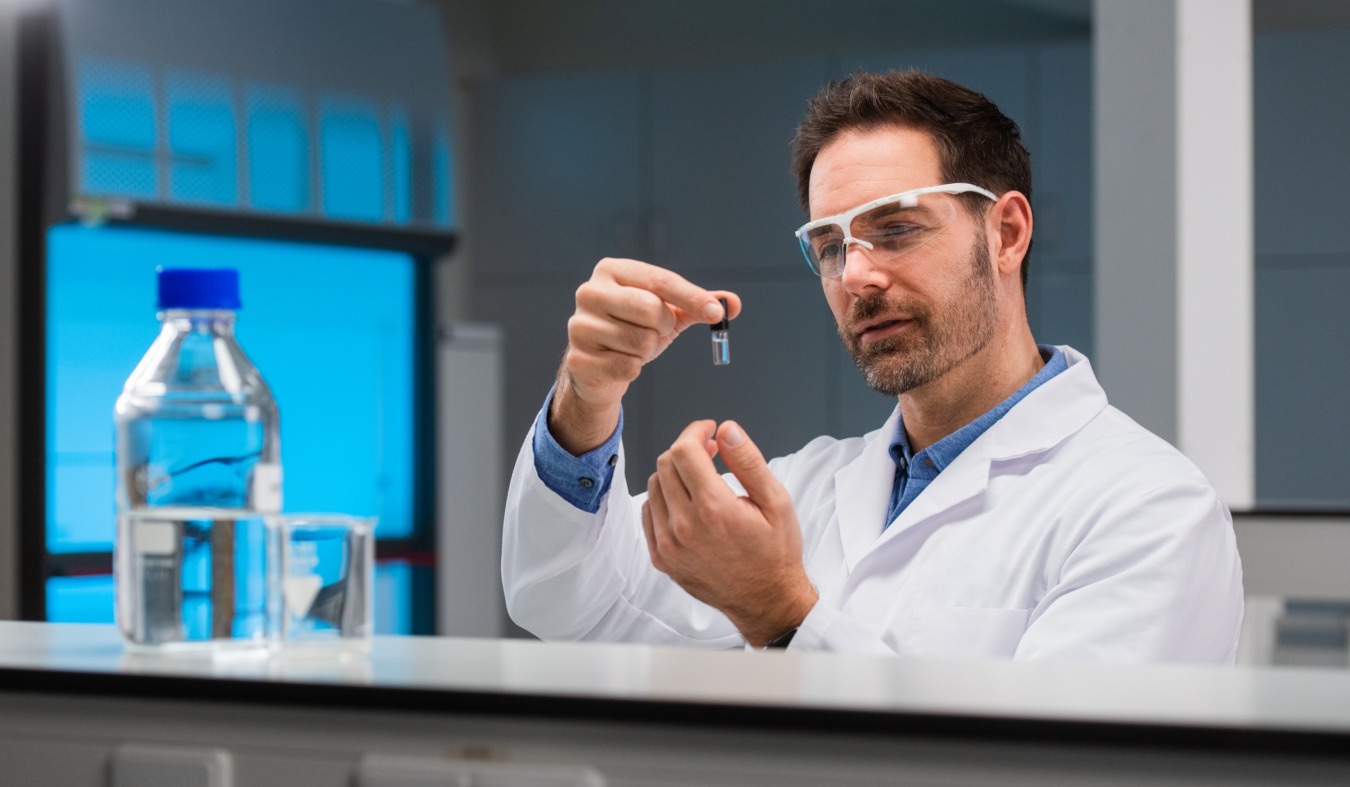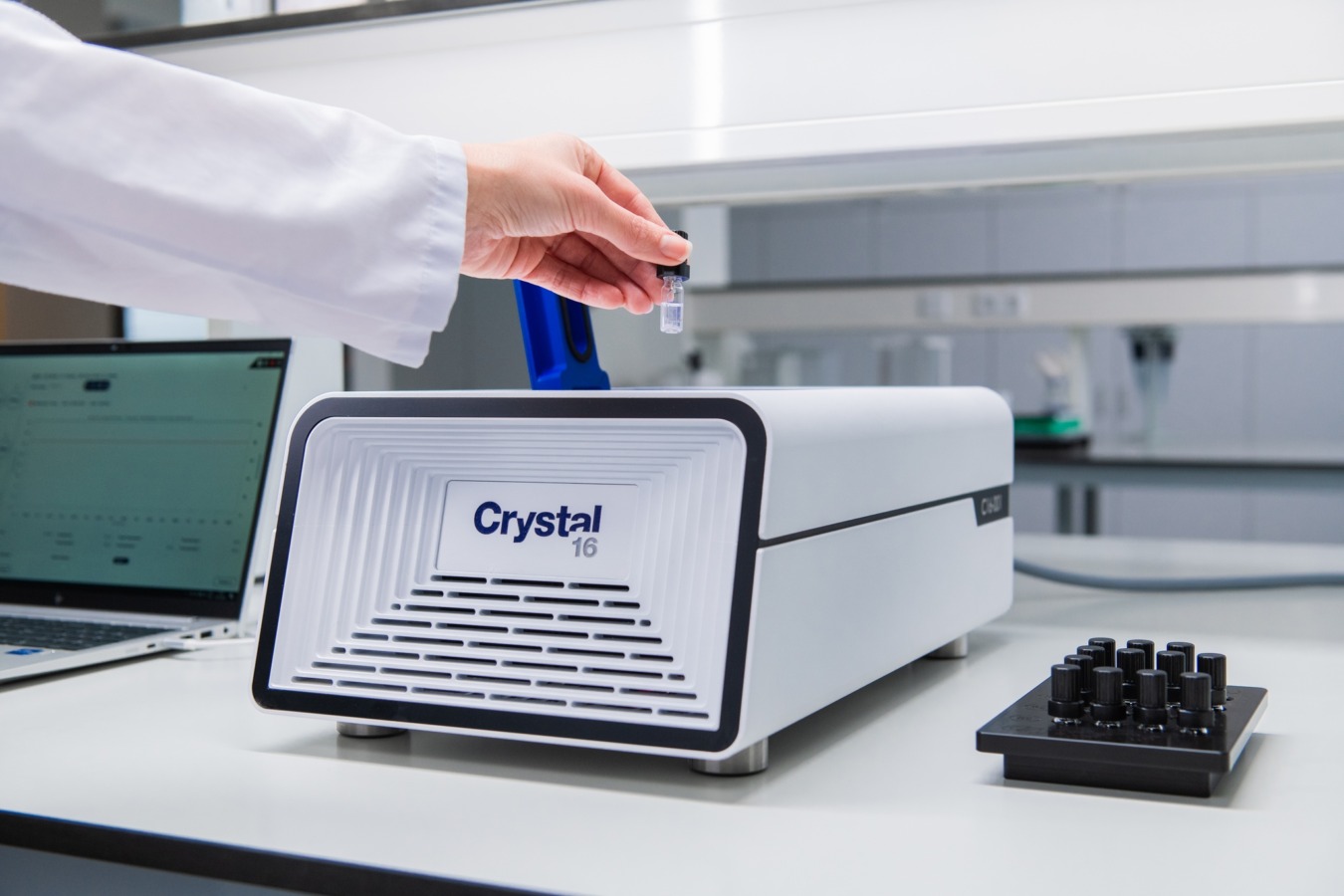One of the biggest limiting factors in research and development is a scientist’s time. Typically, a scientist can only run 2-4 crystallization experiments in a day. As a response to this painpoint, Crystal16's medium throughput design and automation increase efficiency eight-fold. It is designed to work at stages when material or experiment possibilities are limited, but also offer flexibility to aim the selection of a crystallization method for scale-up.

A time-saving approach
In an increasingly competitive market, pharmaceutical companies are under constant pressure to get more new products and processes to market, faster, and with fewer resources. The key to success or even survival lies in effective innovation. The challenge is to dramatically increase R&D output and productivity to strengthen your company’s intellectual property position and maintain a competitive edge. Innovation then becomes the driver for sustainable, profitable growth.
Technobis developed a solution that capitalizes on the advantages of high-throughput experimentation while avoiding its pitfalls, resulting in faster and more productive R&D.
In 80% of all drugs, the active pharmaceutical ingredient (API) is used in crystalline form and 40% of all crystallization process are “cooling crystallizations”. Therefore, it is not surprising that industry has invested heavily on crystallization research. Faced with the same challenges as its customers and in the absence of suitable commercially available equipment, Technobis developed what has become the gold standard in crystallization research, the Crystal16.

The best of both worlds
Designed for experiments at 1 ml scale, Crystal16 combines the best of both worlds. When used early in the drug development life cycle, only small amounts of (expensive) compound are available. The 1 ml scale is the smallest scale compatible with commercially available standard analytical equipment. At the same time, it is large enough to provide flexibility in the choice of crystallization methods, it can allow normal stirring, and furthermore provide first indications of larger-scale process behaviour - aspects that cannot be analysed at the traditional high-throughput microliter scale.
What you see is only a fraction of what you get
Automating the execution of crystallization experiments means more experiments can be carried out in the same timeframe, but also, the results are much more reproducible, which is essential for good science.
The Crystal16 consists of 4 independently temperature- controlled aluminium reactor blocks, each reactor block holding up to 4 standard disposable glass HPLC vials. Its operating software can be used to program and run each reactor block independently while data for each block is stored in a separate CSV file, allowing easy transfer to most standard office PC applications. As a result, one Crystal16 can not only run multiple experiments in parallel; it can also be used by multiple users at the same time (one user per block), offering additional flexibility while increasing the efficiency and productivity of your resources. Additionally, the absence of moving parts makes it extremely robust and low maintenance. Compact yet powerful, this versatile benchtop system takes up only a minimum of your valuable laboratory space.
Versatile by design
The main constraint for a scientist's throughput is time. Typically a scientist can perform 2 to 4 manual crystallization experiments per day.
With Crystal16, one scientist can conduct 16 to 32 well controlled, reproducible experiments per day, and analyze them. This means an eight-fold increase in productivity. Similarly, one Crystal16 shared by 2 or 4 different users doubles or quadruples your team’s efficiency.
From preclinical screening to process optimization, the Crystal16 offers invaluable assistance throughout the various stages of the drug development life cycle. In the early stages it can be used to screen for different salts or polymorphs, while in later stages it can provide key information for crystallization process development and optimization such as solubility, metastable zone width and crystal growth.
Looking to free up your time in the lab?
Read how in this application note on "Fast track to Return on Investment".